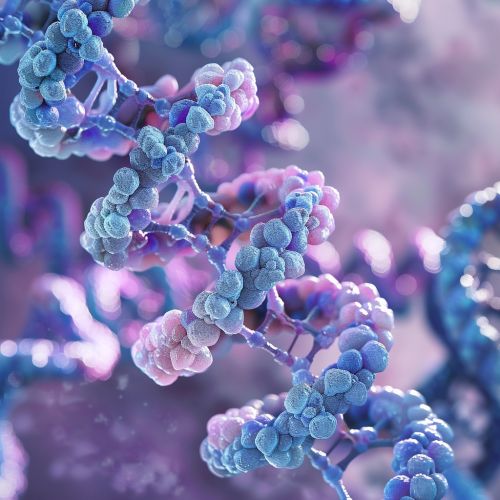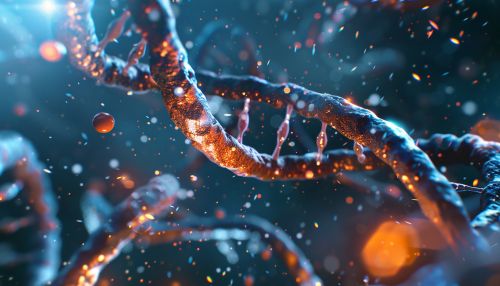Nuclear receptor
Introduction
A nuclear receptor (NR) is a type of protein that is capable of binding to specific sequences of DNA, thus regulating the expression of genes. This class of receptors is unique due to their ability to directly interact with DNA and influence transcription, a process that is fundamental to cell function and health.


Structure
Nuclear receptors are composed of several distinct functional domains. The N-terminal domain (NTD) contains a ligand-independent activation function (AF-1) region, which can regulate gene expression in the absence of a ligand. The DNA-binding domain (DBD) is highly conserved among different nuclear receptors and is responsible for recognizing and binding to specific DNA sequences, known as hormone response elements (HREs). The hinge region connects the DBD to the ligand-binding domain (LBD), which contains a ligand-dependent activation function (AF-2) region. The LBD is also responsible for receptor dimerization and the binding of co-regulators.
Mechanism of Action
The primary function of nuclear receptors is to regulate gene expression. They achieve this by binding to specific DNA sequences, known as hormone response elements (HREs), in the promoter region of target genes. Upon binding to their respective ligands, nuclear receptors undergo a conformational change that allows them to interact with co-regulators and the transcriptional machinery, thereby modulating gene transcription.
Classification
Nuclear receptors can be classified into two main categories: steroid hormone receptors and non-steroid hormone receptors. Steroid hormone receptors, such as the estrogen receptor and the androgen receptor, are typically located in the cytoplasm and translocate to the nucleus upon ligand binding. Non-steroid hormone receptors, on the other hand, are usually located in the nucleus and bind to DNA regardless of whether a ligand is present.
Role in Disease
Given their crucial role in regulating gene expression, it is not surprising that nuclear receptors are implicated in a variety of diseases. For instance, mutations in the retinoic acid receptor have been associated with certain types of leukemia, while alterations in the peroxisome proliferator-activated receptor have been linked to metabolic disorders such as diabetes. Moreover, the overexpression or underexpression of certain nuclear receptors can lead to the development of various types of cancer.
Therapeutic Potential
Due to their role in disease, nuclear receptors have emerged as promising therapeutic targets. Several drugs that modulate the activity of nuclear receptors, such as tamoxifen for breast cancer and rosiglitazone for diabetes, are already in clinical use. Furthermore, ongoing research is aimed at developing new drugs that can selectively target specific nuclear receptors, thereby minimizing side effects and improving therapeutic efficacy.
See Also
Steroid hormone receptor Non-steroid hormone receptor Gene expression Hormone response element Transcription (genetics)
